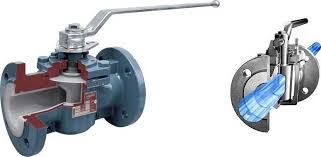2021 Top Valve Manufacturer – Shipping All Around the World
Jan 14,2021
Here, Formen Valve. Co. Ltd has a large variety of valves and configurations that might suit all services and conditions and have different uses, fluids, materials, pressure, and temperature conditions. They not only work for stopping or starting the flow but also regulates throttle flow. Valves also might use to prevent backflow in gaseous handling applications.
We have all of the most common types of automated valves that may fall into one of three main categories, named as a liner, rotary, and self-actuated. Each of them is subdivided into other divisions having their benefits. The further division might include standard valves that include ball, butterfly, diaphragm, globe, knife gate, pinch, piston, sluice, etc.
To understand each of the following, weve as being a top China valve exporter, described them below; lets get started:
Ball Valves:
Because of their excellent operating features, they are widely used for the broadest spectrum of isolation applications. Other than this, theyre available in different sizes and materials in full through and flow conduit.
Butterfly Valves:
The name of it derives from its action, which is a wing-like action of the disc. It operates at right angles to the flow with a primary advantage of offering a seating surface. However, that is only made for isolation flow. They can be managed by a notched lever, handwheel, and electric actuator.
Check Valves:
It is usually related to a non-return valve, which prevents the backflow in the piping by continually keeping the flow of fluid in one direction. These valves are further divided into swing check valves, piston check valves, tilting, and ball check valves; all of these works differently.
Globe Valves:
The flow path through globe valves follows a changing course, which might increase resistance to flow and drop a considerable amount of pressure. Because of the seating arrangements, globe valves are exceptional for throttling flow.
Stop Check Valves:
After research, our specialist has concluded that stop check valves are made essentially to provide the combination of both a stop valve and a piston check valve at one place. However, theyre not designed for throttling but for working as a steam boiler outlet piping when two or more get connect.
Gate Valves:
These gates are commonly used in industrial piping for isolating to turn-on or turn-off the flow instead of regulating flow. Theyre further divided into wedge gate valves, knife gate valves, parallel slide gate valves, and pipeline slab gate valves. All of these valves are made in metal to metal and with a soft seat configuration.
Plug Valves:
These valves are cylindrical or conically-tapered plugin shape, which you can rotate inside the valve body to control flow through the valve. The plugs in plug valves have hollow passageways going sideways through the plug. They are the simplest type of valves and the economical one.
Metals Used in Valves Construction:
Besides these descriptions, weve collected a list of common metals that are used in valve manufacturing. Our exceptional workers have described everything in detail below:
Almunium:
Its a non-ferrous metal, very lightweight, and exceptional in qualities. It might exhibit excellent atmospheric corrosion resistance and can be a quick reactive one with other metals. In valves, almunium is mainly used for exterior components, for instance, handwheels and identification tags.
Copper:
The essential property of wrought copper is their electrical conductivity, corrosion resistance, ductility, and thermal conductivity. It works well in high-temperature applications and is joined by brazing or soldering. Generally, its used for fittings, as its the roughest metal to use.
Bronze:
You can count it as one of the first alloys developed in the bronze age, which is accepted as the industry standard for rating the pressure. It has a higher and quality strength, which works to improve machinability. Moreover, bronze is quite resistant to pitting corrosion, with a general resistance to chemicals.
